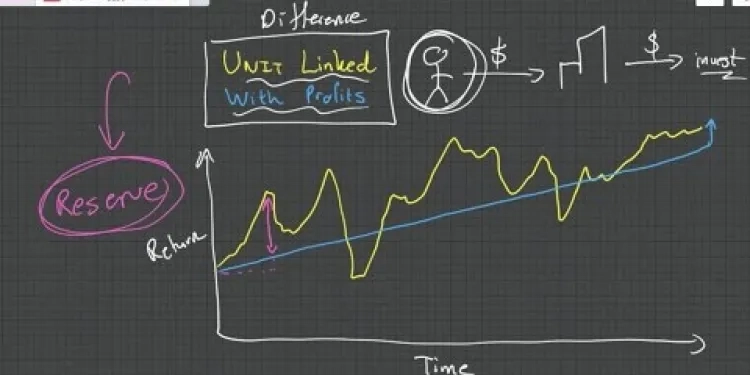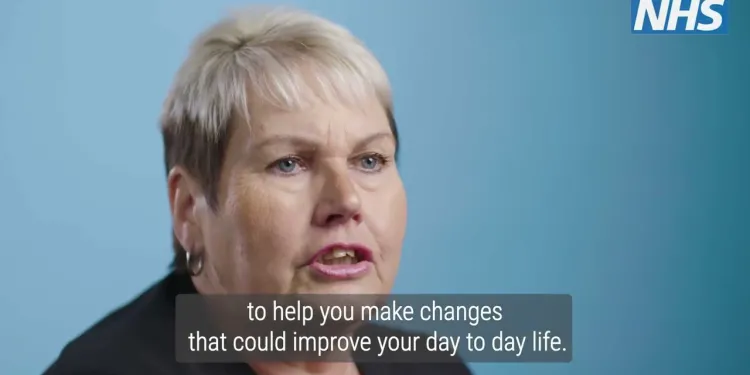Find Help
More Items From Ergsy search
-

Life Insurance Difference between Unit Linked and With Profit Policies
Relevance: 100%
-

How does inheritance tax apply to life insurance policies?
Relevance: 53%
-

Should You Get Life Insurance UK | Life Insurance & Life Assurance
Relevance: 52%
-

Does life insurance cover funeral costs?
Relevance: 44%
-

The Devious Car Insurance Scam Hidden In Your Policy! And How to Deal With it
Relevance: 36%
-

Explaining Car insurance in the UK??
Relevance: 29%
-

How can dangerous driving affect my insurance?
Relevance: 27%
-

Are professionals insured against negligence claims?
Relevance: 27%
-

Do UK citizens need travel insurance for Europe?
Relevance: 26%
-

Can boundary disputes be insured against?
Relevance: 25%
-

Is Wegovy covered by health insurance?
Relevance: 25%
-

Are Wegovy tablets covered by insurance?
Relevance: 25%
-

UK Businesses Struggle with Supply Chain Delays Impacting Profits
Relevance: 25%
-

Is there a change in National Insurance rates for 2026?
Relevance: 24%
-

Does insurance cover Ozempic?
Relevance: 24%
-

Vale Stroke Unit
Relevance: 24%
-

Will insurance cover Ozempic for weight loss?
Relevance: 24%
-

What changes affect pet policies in rented homes?
Relevance: 24%
-

Do insurance rates increase for drivers over 70?
Relevance: 24%
-

Do insurance plans cover the cost of self-testing tools?
Relevance: 23%
-

Will insurance cover the cost of home colorectal cancer tests?
Relevance: 22%
-

Emergency Legal Guidance: Navigating the Impact of Sudden Policy Changes on Families
Relevance: 22%
-

Upcoming Changes to Parental Leave Policies in the UK
Relevance: 22%
-

Is chiropractic care covered by insurance?
Relevance: 21%
-

What healthcare policies should support workers be aware of?
Relevance: 21%
-

What is end of life care?
Relevance: 21%
-

Are vaccines linked to autism?
Relevance: 21%
-

Is childhood obesity a concern in the United Kingdom?
Relevance: 21%
-

Is paracetamol linked to autism?
Relevance: 20%
-

Are there mosquitoes in the United Kingdom?
Relevance: 20%
-

Are there Mosquitos in the United Kingdom?
Relevance: 20%
-

Tour of the Sickle Cell and Thalassaemia Unit at City Hospital | SCaT
Relevance: 19%
-

Rise in Childhood Asthma Linked to Air Pollution in Urban Areas
Relevance: 19%
-

How can a Social Prescribing Link Worker help you? #MeetYourGPTeam
Relevance: 19%
-

Having chemotherapy and other treatments in the Day Treatment Unit
Relevance: 19%
-

Social Prescribing Link Workers are part of new health and wellbeing services in NHS surgeries
Relevance: 19%
-

Endoscopy Unit
Relevance: 19%
-

Is there a link between hay fever and asthma?
Relevance: 19%
-

What if I have gaps in my National Insurance record?
Relevance: 19%
-

Social prescribing in practice: supporting social prescribing link workers
Relevance: 19%
Understanding Life Insurance: Unit Linked vs. With-Profit Policies
Introduction to Life Insurance
Life insurance is a critical financial instrument that offers protection and peace of mind. In the United Kingdom, selecting the right type of policy can have a significant impact on both your wealth and financial security. Two popular options are Unit Linked and With-Profit policies, each with its distinct features and benefits.
Unit Linked Life Insurance Policies
Unit Linked Insurance Policies (ULIPs) are life insurance products that combine investment and insurance. A portion of the premiums paid by the policyholder is allocated to life insurance coverage, while the remainder is invested in various fund options such as equities, bonds, or a mix of both. The performance of these investments directly impacts the cash value and potential returns of the policy. As such, ULIPs offer flexibility and the potential for higher returns, but they also come with higher investment risk. Policyholders can typically choose and switch between funds to align their portfolios with their risk appetite and financial goals.
With-Profit Life Insurance Policies
With-Profit policies, on the other hand, are designed to provide a smoother return on investment by participating in the profits of the insurance company. The insurance company invests premiums in a diversified portfolio, and instead of linking returns directly to market performance, they distribute profits to policyholders in the form of bonuses. These bonuses can be declared yearly (reversionary bonuses) and/or as a terminal bonus at the end of the policy term. This feature makes With-Profit policies generally less volatile than Unit Linked policies, providing a more stable investment option to individuals who prefer certainty over potential high returns.
Choosing the Right Policy
The choice between Unit Linked and With-Profit policies depends on individual financial goals, risk tolerance, and investment preference. If you are keen on market exposure and potential high returns, and you are comfortable with higher risk, a Unit Linked policy might be suitable. Conversely, if you prefer consistent growth with reduced risk exposure, a With-Profit policy could be more appropriate. Consulting with a financial advisor can help tailor a solution that aligns best with your personal circumstances.
Conclusion
Both Unit Linked and With-Profit life insurance policies offer unique advantages and serve different needs for policyholders in the UK. Understanding the key differences and considering your long-term financial objectives is crucial in making an informed choice that ensures both protection and potential wealth accumulation.
Life Insurance: Understanding Unit Linked and With Profit Policies in the UK
Choosing the right life insurance policy can be challenging, especially with various options available in the UK market. Two popular types of policies are Unit Linked and With Profit policies. Understanding their differences is crucial for making informed decisions.
What are Unit Linked Policies?
Unit Linked life insurance policies are investment-oriented. Premiums paid by policyholders are pooled with funds from other investors to purchase units in a range of investment funds chosen by the policyholder. The value of these units can rise or fall, reflecting the performance of the underlying assets. These policies offer flexibility in terms of fund choice and potential growth, allowing policyholders to tailor investments according to their risk appetite and financial goals.
Exploring With Profit Policies
With Profit policies differ significantly. Premiums are invested in a wide range of assets, including shares, property, and bonds. Instead of experiencing direct fluctuations in value, policyholders receive bonuses. These bonuses are declared annually and are based on the performance of the insurance company's investment fund. A final terminal bonus may also be awarded at policy maturity or on a claim. With Profit policies aim to provide stable returns over time and smooth out market volatility.
Key Differences and Considerations
The primary difference between the two lies in the risk and return profile. Unit Linked policies offer potentially higher returns but come with more risk due to direct exposure to market fluctuations. With Profit policies, on the other hand, offer more stable, yet generally lower, returns due to the smoothing process applied by insurers.
Policyholders should consider their risk tolerance, investment knowledge, and financial objectives when choosing between these options. Unit Linked policies might appeal to those seeking higher growth potential and willing to accept market-related risks. With Profit policies are suitable for those valuing stability and preferring a more conservative investment approach.
In conclusion, understanding these differences is crucial for UK consumers to align their life insurance choices with their financial planning objectives. Consulting a financial advisor can provide personalized guidance tailored to individual needs and circumstances.
Understanding Life Insurance: Unit Linked vs. With-Profit Policies
Introduction to Life Insurance
Life insurance is a plan that gives money help if something happens to you. It can make you feel safe and secure. In the UK, choosing the right plan is important. It can help you with your money and safety. There are two types of plans: Unit Linked and With-Profit. They each have different things to offer.
Unit Linked Life Insurance Policies
Unit Linked Insurance Policies, or ULIPs, are special plans. They mix two things: saving money and getting protection. Part of the money you pay is for safety. The other part is invested in things like stocks and bonds. How well these investments do affects how much money you might get back. ULIPs can give you more money, but they are also riskier. You can choose and change your investments to match what you want and how much risk you are okay with.
With-Profit Life Insurance Policies
With-Profit policies work differently. They help you earn money smoothly. The insurance company uses the money to invest. Instead of risking money in the market, they give you bonuses. These bonuses can come every year or when the policy ends. With-Profit policies are safer. They might not earn as much money as ULIPs, but they are more stable. This is good if you like to know what you will get without surprises.
Choosing the Right Policy
Picking between Unit Linked and With-Profit depends on what you want. If you want to try and earn more and are okay with some risk, Unit Linked might be good for you. But if you like steady growth and don't want much risk, With-Profit could be better. Talking to a money advisor can help you decide what is best for you.
Conclusion
Both Unit Linked and With-Profit insurance are useful in different ways. They help people in the UK in different situations. Understanding these plans and knowing what you want in the future will help you pick the right one. This will offer safety and a chance to grow your money.
Life Insurance: Understanding Types in the UK
Picking the right life insurance can be hard. In the UK, there are different types. Two popular ones are Unit Linked and With Profit policies. It’s important to know how they are different so you can make a good choice.
What are Unit Linked Policies?
Unit Linked policies are like an investment. When you pay money for these policies, your money is mixed with others to buy units. These units are in different investments that you pick. The value of these units can go up or down. It depends on how the investments do. These policies let you choose where your money goes. You can decide based on how much risk you like and what your money goals are.
Exploring With Profit Policies
With Profit policies work differently. They put your money into many kinds of things, like shares, property, and bonds. You don’t see the value change directly. Instead, you get bonuses. These bonuses are given out each year. They depend on how well the company’s investments do. There might be a big bonus at the end too. With Profit policies try to give steady returns and keep things calm even if markets change.
Key Differences and Considerations
The main difference is in risk and return. Unit Linked policies could give you more money back, but they are riskier because they change with the market. With Profit policies give more stable returns, but they might be lower since they are safer.
Think about how much risk you can take, what you know about investing, and your money goals. If you want more growth and can handle market ups and downs, Unit Linked could be for you. If you like steady growth and less risk, With Profit might be better.
It’s important to understand these differences so you can pick the best life insurance for your needs. Talking to a financial advisor can help. They can give advice that fits you and your plans.
Frequently Asked Questions
What is the main difference between unit-linked and with-profit life insurance policies?
The main difference is how the investment return is managed. Unit-linked policies have returns directly linked to the performance of investment funds, so the policy value can fluctuate. With-profit policies smooth returns over time by adding regular bonuses and a final bonus, providing more stable growth.
How does a unit-linked life insurance policy work?
In a unit-linked policy, your premiums are invested in a range of funds that you choose. The value of your policy is directly linked to the performance of these funds, which means it can go up or down based on market conditions.
How does a with-profit life insurance policy work?
A with-profit policy invests premiums in a suitable fund chosen by the insurance company. The fund usually seeks steady, long-term growth. Profits are distributed among policyholders in the form of bonuses, smoothing out market fluctuations.
What are bonuses in a with-profit policy?
Bonuses in a with-profit policy are additions to your policy value. There are usually two types: regular or reversionary bonuses added throughout the policy term, and a terminal or final bonus paid out when the policy matures or on death.
Can the value of a unit-linked policy decrease?
Yes, the value of a unit-linked policy can decrease as it is dependent on the performance of the chosen investment funds. If these investments perform poorly, the policy value could decrease.
Are with-profit policies risk-free?
No investment is completely risk-free. While with-profit policies aim to provide stable returns, the bonuses depend on the insurer's profits and the performance of the managed fund, which could affect overall payouts.
Can I change the investment funds in a unit-linked policy?
Yes, unit-linked policies typically offer the flexibility to switch between different investment funds so you can adjust your investment strategy if needed. However, there might be fees associated with switching funds.
Do with-profit policies guarantee a minimum payout?
Some with-profit policies offer a guarantee on the sum assured and accrued bonuses, ensuring a minimum payout on maturity or death, but this depends on the terms of the specific policy.
How do charges and fees compare between unit-linked and with-profit policies?
Unit-linked policies often have explicit charges for fund management and administration. With-profit policies might not list investment charges separately as these could be covered by the bonuses.
Are with-profit policies affected by inflation?
Like most investments, with-profit policies can be affected by inflation, particularly if the bonuses do not keep pace with inflation over time, potentially reducing the real value of your payout.
Can I access cash from a unit-linked policy during its term?
Yes, some unit-linked policies allow partial withdrawals or loans against the policy value, but this may impact the future value or the death benefit, and additional charges may apply.
How are returns taxed in unit-linked and with-profit policies?
Returns from both types of policies are typically subject to tax. UK policies may have different tax treatments for gains, withdrawals, and payouts, so it’s important to understand how each impacts your tax situation.
Are with-profit policies flexible in terms of premium payments?
With-profit policies generally require regular premium payments, but some may offer premium holidays or the option to change payment amounts, depending on the policy terms.
Who should consider a unit-linked life insurance policy?
Unit-linked policies may suit those comfortable with investment risks and looking for potentially higher returns linked to market performance, along with life insurance coverage.
Who should consider a with-profit life insurance policy?
Those seeking more stable, long-term growth with some level of investment without direct market exposure might consider a with-profit policy. It’s important for them to understand how bonuses are added to the policy.
What is the big difference between unit-linked and with-profit life insurance?
Life insurance is a type of plan to help your family with money if you are not around anymore.
Unit-linked insurance:
- Your money is put in funds that can go up and down.
- The money you get depends on how these funds do in the market.
With-profit insurance:
- Your money grows in a safer way.
- You get a bonus each year and a big one at the end.
Good to know:
- Use pictures or videos to help understand.
- Ask someone you trust to talk about it with you.
The big difference is in how you get money back from investing. With unit-linked policies, your money changes with the stock market, so it can go up and down. With with-profit policies, you get a steady increase over time because bonuses are added regularly, making it more stable.
Here are some tips to make this easier to understand:
- Use simple words to explain things.
- Break information into small parts.
- Look at pictures or diagrams that show how money grows.
- Use a tool that reads text out loud to you.
What is a unit-linked life insurance policy?
A unit-linked life insurance policy helps you in two ways:
1. It gives your family money if you die.
2. It helps your savings grow.
This is how it works:
- You pay money regularly.
- Part of this money goes into insurance for your family.
- The rest of the money goes into investments. This can help you save more over time.
Here are some tips to help you understand:
- Ask someone you trust to explain difficult words.
- Use pictures or diagrams to see how your money is used.
In a unit-linked policy, you pay money that is put into different money pots called funds. You get to pick which funds you want your money in. The value of your policy can change. It can go up or down depending on how these money pots do in the market.
If you find it hard to understand money words, you can ask a grown-up to explain or use a simple money app to help you learn.
How does a with-profit life insurance policy work?
A with-profit life insurance policy helps you save money and protects your family. Here is how it works:
- You pay money to the insurance company every month.
- The insurance company invests your money to try to make more money.
- The company shares some of the extra money with you. This is called a "bonus."
- If something happens to you, the policy gives money to your family. This money is called a "payout."
To understand better, you can ask someone you trust to explain, like a family member or a friend. You can also use pictures or videos that show how it works.
A with-profit policy is a type of savings plan with an insurance company. You pay money, called premiums, into it. The insurance company puts this money into a special fund to help it grow. They try to make the money grow slowly but surely over a long time.
As the fund makes money, the company shares some of this profit with you. This sharing is done through what they call bonuses. It helps to give you a more steady return, even when the market changes a lot.
If you find reading hard, you can ask someone to read with you. You might also use tools like text-to-speech apps or audiobooks.
What are bonuses in a with-profit policy?
A "with-profit policy" is a kind of money plan. It can help you save money for the future.
When you have a "with-profit policy," you might get extra money. This extra money is called a "bonus."
Companies sometimes share their good luck with you if they make more money than they planned. This is how you can get a bonus.
If you find it hard to understand, ask someone to help explain it. You can also use pictures or diagrams to make it clearer.
Bonuses in a with-profit policy are extra money added to what your policy is worth. There are usually two types: regular bonuses are added to the policy over time, and a final bonus is given when the policy ends or if the policyholder dies.
Can a unit-linked policy go down in value?
Yes, a unit-linked policy can go down in value. This is because it depends on how the money is invested. If the investments don't do well, the policy could be worth less.
If you find it hard to understand, you can:
- Ask someone to explain the words you don't know.
- Use apps that can read the text out loud for you.
- Make notes or draw pictures to help remember the information.
Are with-profit policies risk-free?
A with-profit policy is a way to save or invest money. It is important to know that with-profit policies are not risk-free. This means there can be some risk or chance of losing money.
If you are not sure, you can ask someone you trust. It can also help to use tools like apps or websites that explain money choices in an easy way.
No investment is completely safe. With-profit policies try to give steady money back. But the extra money you get depends on how well the insurance company is doing and how the money is managed. This can change how much money you get in the end.
Try using picture cards or simple charts to better understand how money grows. You can also ask a friend or family member for help when thinking about investments.
Can I switch the money in a unit-linked policy?
If you have a unit-linked policy, you might want to change where your money is invested. This means switching the funds or choosing different ones.
Talk to your insurance company or financial advisor. They can help you understand how to make changes and explain any costs involved.
Support tools: Use a calculator to see how different choices might affect your money.
Yes, with unit-linked policies, you can choose different funds to invest in. This means you can change your plan if you need to. But, remember, there might be costs when you switch funds.
If you find it hard to understand, try these tools:
- Ask someone you trust to explain.
- Use apps or software that read aloud to you.
- Draw pictures or charts to help you see it better.
Do with-profit policies promise a minimum payout?
With-profit policies are a type of savings and insurance plan. They can grow your money over time. But do they always promise a certain amount of money back to you?
It's important to check your policy details carefully. Some policies may give a promise of a minimum payout, while others may not. Always ask your insurance company to explain if you are unsure.
If you need help understanding your policy, you can:
- Ask a family member or friend to help you read it.
- Talk to the insurance company and ask them to explain it simply.
- Use a magnifier tool on your computer or phone to see the text better.
- Use a text-to-speech tool to hear the information read aloud.
Some life insurance plans promise to pay a certain amount of money when the plan ends or if the person dies. This money includes what was promised at the start and any extra bonuses. But it all depends on the rules of the plan.
How do charges and fees compare between unit-linked and with-profit policies?
This question is about money you pay for two types of insurance plans: unit-linked and with-profit policies.
For unit-linked plans:
- You pay money to the plan, and it gets invested in things like stocks.
- The costs can go up and down, like the value of your investments.
For with-profit plans:
- You pay money to the plan, which promises to give you profit over time.
- The costs are usually more steady and predictable.
If you need help understanding this, you can:
- Ask someone you trust to explain it to you.
- Use simple drawings to see how the plans work.
- Talk to a financial advisor for advice.
Unit-linked insurance plans have clear charges for managing the money and doing paperwork. With-profit plans might not show these charges because they can be included in the bonuses you get.
Do with-profit policies change because of inflation?
With-profit policies are a type of investment. They can be changed by inflation. This happens if the bonuses do not grow as fast as inflation. If this happens, your payment might be worth less.
Can I get money from a unit-linked policy while it is still going?
A unit-linked policy is an insurance plan that can help you save money and invest. Sometimes, people want to take out some money before the plan ends.
Here are some tips that could help:
- Ask an adult you trust or an advisor who knows about finances. They can help explain it to you.
- Use simple words and pictures to learn about your policy.
- Check if there are any rules for taking money out early. Sometimes there are extra fees.
If you need help with these, ask someone to go through them with you.
Yes, some insurance plans let you take out some money or borrow against the plan's value. But doing this can change how much money you'll get later or the amount paid when you pass away. You might also have to pay extra fees.
How do you pay tax on money earned from unit-linked and with-profit policies?
You might have to pay tax on money you make from these policies. In the UK, the tax rules can be different for when you make money, take money out, or receive a payout. It's important to know how each one can affect the taxes you pay.
Try asking an adult for help if you're unsure. You can also use tools like a calculator or online tax guides to make it easier to understand.
Can you change how much you pay with with-profit policies?
With-profit policies usually need regular payments. But sometimes, they might let you take a break from paying. You might also be able to change how much you pay. Check the policy rules to know what you can do.
Who should think about getting a unit-linked life insurance policy?
A unit-linked life insurance policy is for people who want a life insurance plan that also lets them invest. Here are some things to think about:
- Want to invest: If you want your money to grow over time while being insured, this could be a good option.
- Comfortable with risk: Investments can go up or down, so you should be okay with taking some risks.
- Looking for flexibility: You can choose how your money is invested, which offers more control.
If you are unsure, ask a financial advisor or an adult you trust to help you understand better. They can help you decide if this is right for you.
Unit-linked policies might be good for people who are okay with taking some risks. These policies can give you more money if the market goes up. They also include life insurance to help your family if you pass away.
Who should think about getting a with-profit life insurance policy?
A with-profit life insurance policy might be good for:
- People who want to save money and get a bonus over time.
- Those who like their money to grow safely with an insurance company.
- Anyone who wants to leave some money for their family when they pass away.
If you find things hard to read, you can ask someone to help you understand. You might also find it easier to use tools that read text out loud or show words with pictures.
If you want your money to grow slowly and safely over time, you might like a "with-profit policy." This means you invest without taking a big risk. It’s good to know how bonuses (extra money) are added to your policy.
Useful Links
- Ergsy carfully checks the information in the videos we provide here.
- Videos shown by Youtube after a video has completed, have NOT been reviewed by ERGSY.
- To view, click the arrow in centre of video.
- Most of the videos you find here will have subtitles and/or closed captions available.
- You may need to turn these on, and choose your preferred language.
- Go to the video you'd like to watch.
- If closed captions (CC) are available, settings will be visible on the bottom right of the video player.
- To turn on Captions, click settings .
- To turn off Captions, click settings again.
More Items From Ergsy search
-

Life Insurance Difference between Unit Linked and With Profit Policies
Relevance: 100%
-

How does inheritance tax apply to life insurance policies?
Relevance: 53%
-

Should You Get Life Insurance UK | Life Insurance & Life Assurance
Relevance: 52%
-

Does life insurance cover funeral costs?
Relevance: 44%
-

The Devious Car Insurance Scam Hidden In Your Policy! And How to Deal With it
Relevance: 36%
-

Explaining Car insurance in the UK??
Relevance: 29%
-

How can dangerous driving affect my insurance?
Relevance: 27%
-

Are professionals insured against negligence claims?
Relevance: 27%
-

Do UK citizens need travel insurance for Europe?
Relevance: 26%
-

Can boundary disputes be insured against?
Relevance: 25%
-

Is Wegovy covered by health insurance?
Relevance: 25%
-

Are Wegovy tablets covered by insurance?
Relevance: 25%
-

UK Businesses Struggle with Supply Chain Delays Impacting Profits
Relevance: 25%
-

Is there a change in National Insurance rates for 2026?
Relevance: 24%
-

Does insurance cover Ozempic?
Relevance: 24%
-

Vale Stroke Unit
Relevance: 24%
-

Will insurance cover Ozempic for weight loss?
Relevance: 24%
-

What changes affect pet policies in rented homes?
Relevance: 24%
-

Do insurance rates increase for drivers over 70?
Relevance: 24%
-

Do insurance plans cover the cost of self-testing tools?
Relevance: 23%
-

Will insurance cover the cost of home colorectal cancer tests?
Relevance: 22%
-

Emergency Legal Guidance: Navigating the Impact of Sudden Policy Changes on Families
Relevance: 22%
-

Upcoming Changes to Parental Leave Policies in the UK
Relevance: 22%
-

Is chiropractic care covered by insurance?
Relevance: 21%
-

What healthcare policies should support workers be aware of?
Relevance: 21%
-

What is end of life care?
Relevance: 21%
-

Are vaccines linked to autism?
Relevance: 21%
-

Is childhood obesity a concern in the United Kingdom?
Relevance: 21%
-

Is paracetamol linked to autism?
Relevance: 20%
-

Are there mosquitoes in the United Kingdom?
Relevance: 20%
-

Are there Mosquitos in the United Kingdom?
Relevance: 20%
-

Tour of the Sickle Cell and Thalassaemia Unit at City Hospital | SCaT
Relevance: 19%
-

Rise in Childhood Asthma Linked to Air Pollution in Urban Areas
Relevance: 19%
-

How can a Social Prescribing Link Worker help you? #MeetYourGPTeam
Relevance: 19%
-

Having chemotherapy and other treatments in the Day Treatment Unit
Relevance: 19%
-

Social Prescribing Link Workers are part of new health and wellbeing services in NHS surgeries
Relevance: 19%
-

Endoscopy Unit
Relevance: 19%
-

Is there a link between hay fever and asthma?
Relevance: 19%
-

What if I have gaps in my National Insurance record?
Relevance: 19%
-

Social prescribing in practice: supporting social prescribing link workers
Relevance: 19%


